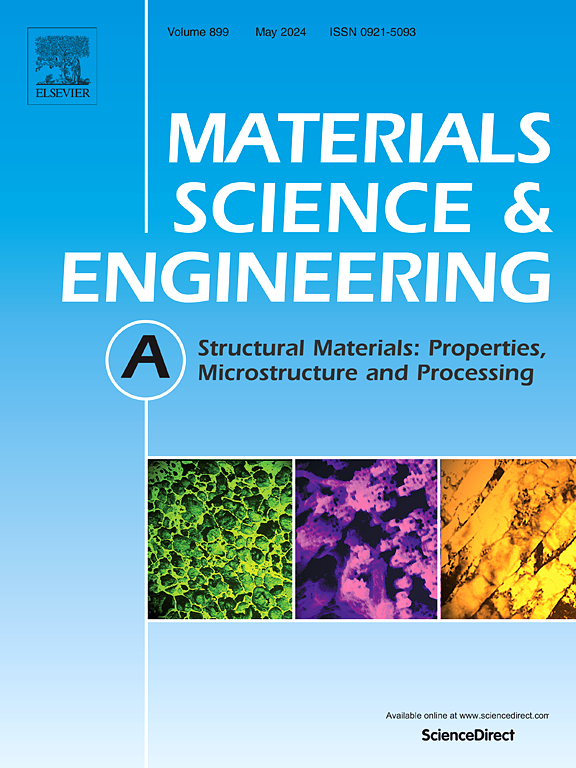用于承重应用的稀 Ti-Ru 合金的强度和应变硬化性能增强
IF 6.1
2区 材料科学
Q1 MATERIALS SCIENCE, MULTIDISCIPLINARY
引用次数: 0
摘要
本文章由计算机程序翻译,如有差异,请以英文原文为准。
Enhanced strength and strain hardening in a dilute Ti-Ru alloy for load-bearing applications
Ruthenium (Ru) is often added to Ti alloys to enhance corrosion resistance, and due to its inherently high hardness, dilute Ti-Ru alloys could have both high strength and excellent corrosion resistance, which are appealing properties for load-bearing biomedical applications. However, limited knowledge exists regarding the microstructures, mechanical properties, and deformation mechanisms of Ti-Ru alloys. In this study, a Ti-1.5Ru at.% alloy with a duplex microstructure consisting of α blocks embedded within a matrix containing α′ martensites and retained β was prepared. Microstructural analyses confirmed that both α blocks and α′ martensites maintained the classical Burgers orientation relationship with the retained β. Nanoindentation experiments demonstrated higher hardness in the α blocks than in the matrix regions. Room-temperature tensile tests revealed excellent mechanical properties, including Young's modulus of 98 GPa, yield strength of 987 MPa, ultimate tensile strength of 1237 MPa, and significant strain hardening, resulting in 5.7 % uniform elongation. The high strength of this Ti-1.5Ru alloy can be attributed to the refined duplex microstructure, while the dislocations in the α blocks, along with stress-induced α′ and α″ martensites in the retained β, contributed to the observed strong strain hardening. This study sheds light on the potential load-bearing biomedical applications of high-strength dilute Ti-Ru alloys, offering microstructural robustness and promising mechanical performance.
求助全文
通过发布文献求助,成功后即可免费获取论文全文。
去求助
来源期刊

Materials Science and Engineering: A
工程技术-材料科学:综合
CiteScore
11.50
自引率
15.60%
发文量
1811
审稿时长
31 days
期刊介绍:
Materials Science and Engineering A provides an international medium for the publication of theoretical and experimental studies related to the load-bearing capacity of materials as influenced by their basic properties, processing history, microstructure and operating environment. Appropriate submissions to Materials Science and Engineering A should include scientific and/or engineering factors which affect the microstructure - strength relationships of materials and report the changes to mechanical behavior.
 求助内容:
求助内容: 应助结果提醒方式:
应助结果提醒方式:


